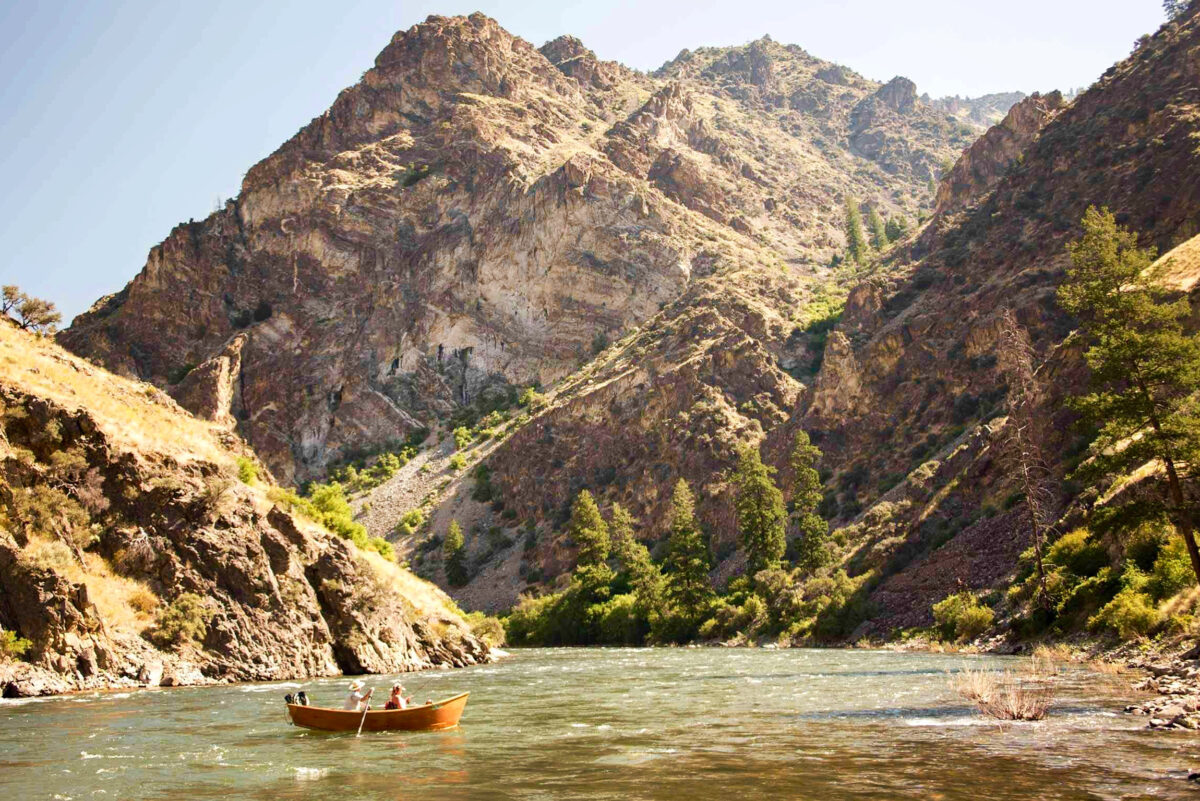Do you want to run through the deepest wilderness in the lower 48? Float one of the continent’s most remote and wild rivers? Encounter the tracks of wolverines and Bighorn sheep? Run through deep forest and steep, rugged mountains? Soak in hot springs? Explore ancient indigenous caves and pictographs? Swim in the cleanest water you’ll ever experience? Cast flies in one of the healthiest trout fisheries on the planet? How does it sound to do all this away from any motorized vehicles or roads for five days?
New Terrain to Run
Running and floating along the Middle Fork of the Salmon is truly a once-in-a-lifetime experience. This year Aspire Adventure Running -in collaboration with Helfrich River Outfitters- is excited to introduce a one-of-a-kind running/rafting wilderness trip.
Over five days, run up to 80 miles along the river (~20 miles each day) and then float the final 40, or you can float as many days as you want. You can bring family or friends who can float while you run. And every night, you can gather up around the campfire to trade stories and scouting reports from your adventures in this deep, beautiful, one-of-a-kind wilderness.
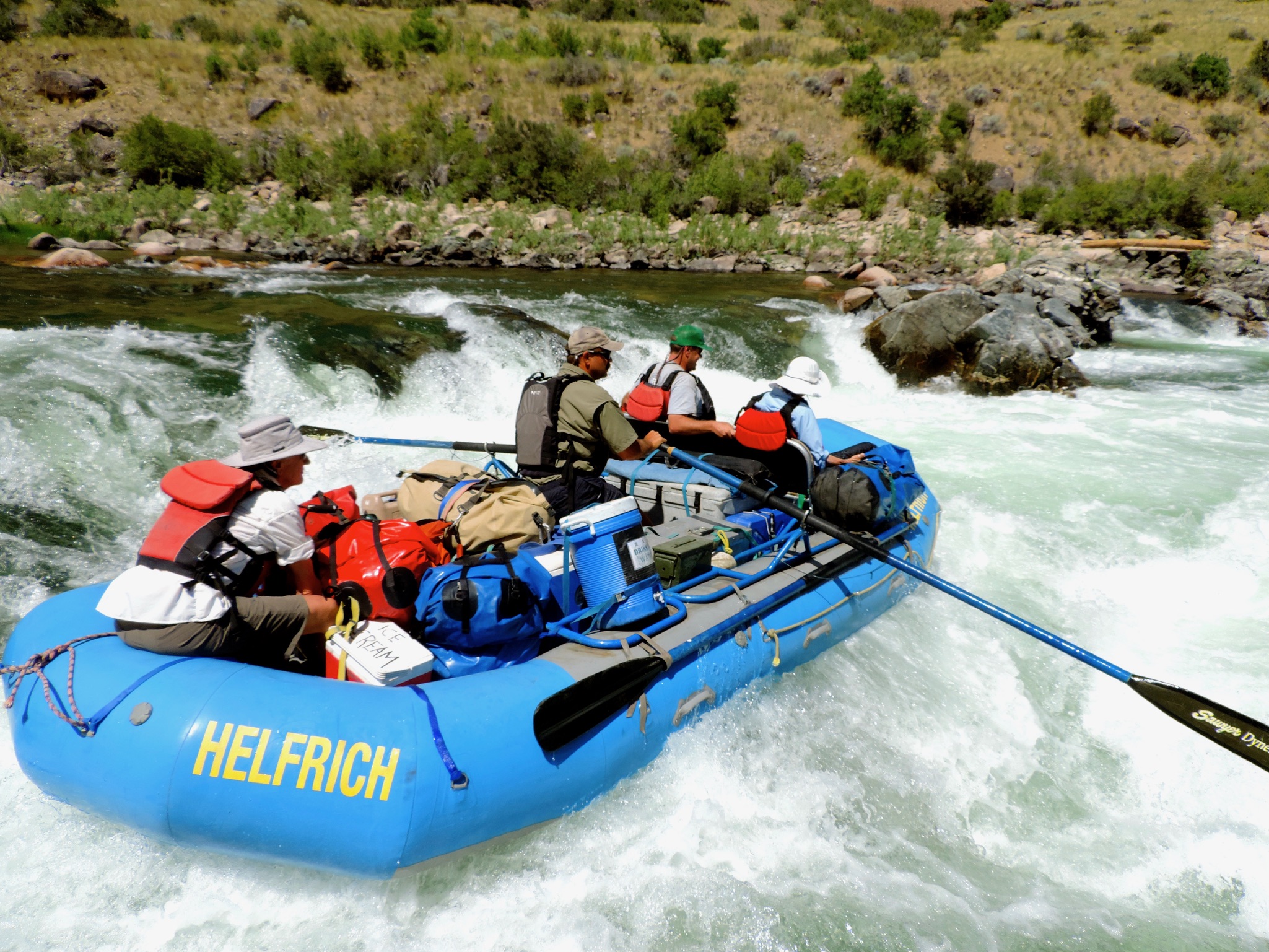
A Wild and Scenic River
Known as “The Best River in the World,” The Middle Fork of the Salmon flows 104 miles through the deep heart of the Frank Church River of No Return Wilderness. It has over 350-nearly continuous- rapids between class I-IV. The Salmon gained its name, the “River of No Return,” when early twentieth-century wooden boats could navigate downriver, but not get back up through the powerful rapids. Unlike the Main Stem of the Salmon River, the Middle Fork has no motorized jet boats, so you are in true, remote wilderness. Outside of Alaska, there is nowhere more remote in the United States.
The Salmon River canyon is even deeper than Arizona’s Grand Canyon, but unlike the Grand Canyon’s towering cliffs, the Salmon River Canyon is a diverse combination of wooded ridges, huge bluffs and slides, solitary crags and stone towers. It’s a classic northern Rockies landscape of Douglas Fir and Lodgepole pine beneath steep scree and rock slopes. This is the ancestral land of the Tuka Deka Sheepeaters tribes and the Shoshone and Nez Perce. Their artifacts and pictographs are spread throughout the landscape, along with the remnants of a handful of old mining and pioneer cabins.
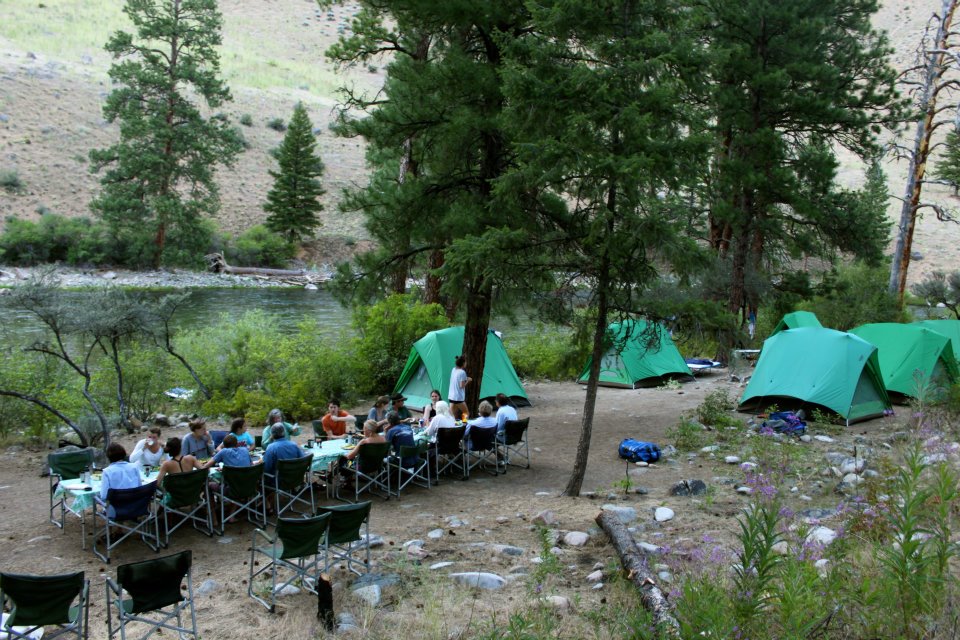
History of Wilderness
Designated in 1980 and including a mixture of National Forest and BLM land, The Frank Church-River of No Return Wilderness is the largest contiguous wilderness in the lower 48 with 2.367 million acres. Together with the Gospel Hump Wilderness and connected roadless Forest Service land, it is the core of a 3.3 million acre roadless area. Nearby, separated only by a single dirt road, the Selway-Bitterroot Wilderness adds over a million more acres to this massive area of wild, conserved land tucked up in northern Idaho.
The Wilderness is named for US Senator Frank Church, a Senate floor sponsor of the 1964 Wilderness Act (which protected 9 million acres of US land) and the Wild and Scenic Rivers Act, which included the Middle Fork of the Salmon. Indeed, Church-who also helped to create the Hells Canyon Recreational Area and the Selway-Bitterroot Wilderness- was, along with luminaries like Mardie Murie, Stewart Udall and Howard Zahniser, one of the pivotal players in the mid-century US conservation movement that became a model for the rest of the world.
Because of its size and remoteness, this region provides habitat for wolverines, mountain lions, gray wolves, black bears, lynx, coyote, bighorn sheep, mountain goats, elk and moose. While there are no established populations of Grizzlies here, there probably will be in the future because the habitat is perfect for them. As you run and float, you’re sure to see wildlife, and lots of sign.
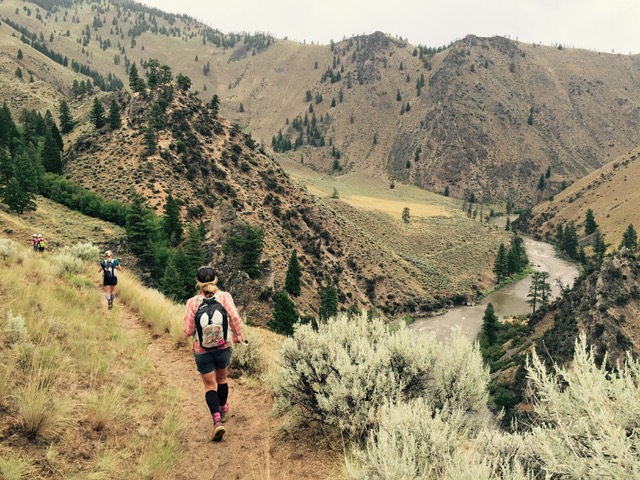
Crown Jewel of American Conservation
As an old rafting guide myself, I can tell you that the Middle Fork of the Salmon is one the handful of premier river trips on the continent, a dynamic mixture of great whitewater, remote wilderness, and beautiful landscapes. I can also tell you that there are few experiences more privileged than a wilderness float trip, where you can be a remote area, but with coolers of food, dutch ovens, and all of the other things you can’t bring on a backpacking trip. To combine such an opportunity with trail running is truly special.
Frank Church once wrote that, “The great purpose is to set aside a reasonable part of the vanishing wilderness, to make certain that generations of Americans yet unborn will know what it is to experience life on undeveloped, unoccupied land in the same form and character as the Creator fashioned it. It is a great spiritual experience. I never knew a man who took a bedroll into an Idaho mountainside and slept there under a star-studded summer sky who felt self-important that next morning.”
So, come experience one of the crown jewels of American conservation, one of the great wildernesses and remote rivers. Run. Float. Cast. Soak. Put a bedroll down on an Idaho mountainside with us. You’ll be glad you did.
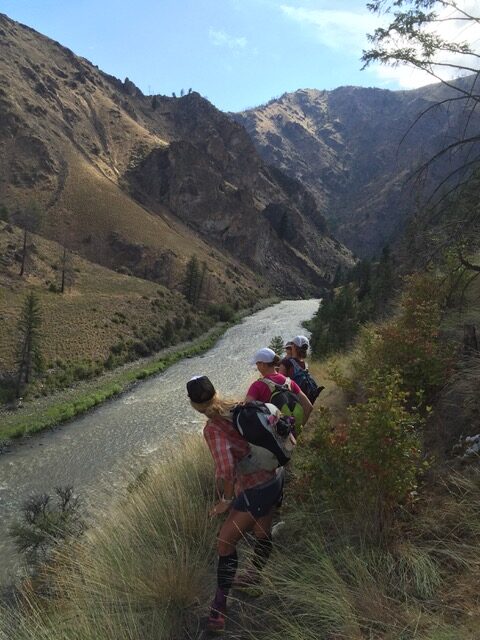
Run/Raft the River of No Return Stage Trip
A Raft Supported Multi-day Run on Idaho’s Famed Middle Fork of the Salmon River
4 Run Days, 5 Raft Days, 80 Miles
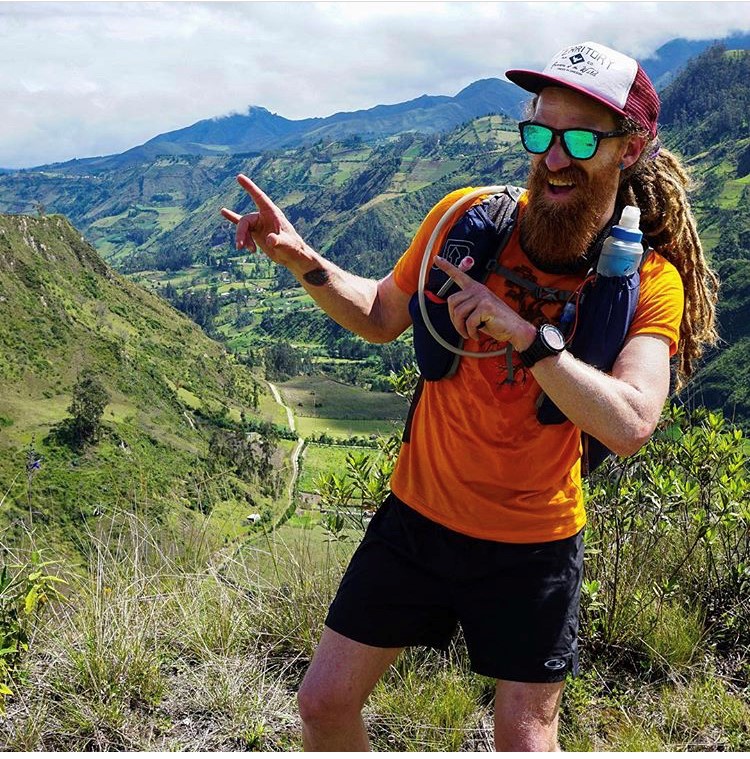
About the author:
With three decades spent exploring the PNW and Alaska, Ian Ramsey is based in Maine, where he directs the Kauffmann Program for Environmental Writing and Wilderness Exploration, and teaches writing, ecology, brain science, music and mindfulness to high school students. With over two decades leading trips and expeditions across the US, Alaska and internationally, he loves empowering people to take agency in their lives and discover new places. Ian is a poet and graduate of the Rainier Writing Workshop, and his writing has been featured in places like Terrain.org, Orion and High Desert Journal. He also directs a community steelband, loves kayaking big water, drinks copious amounts of coffee, geeks out around nutrition, literature and fitness, and was once a member of an Inuit Dance Troupe.

